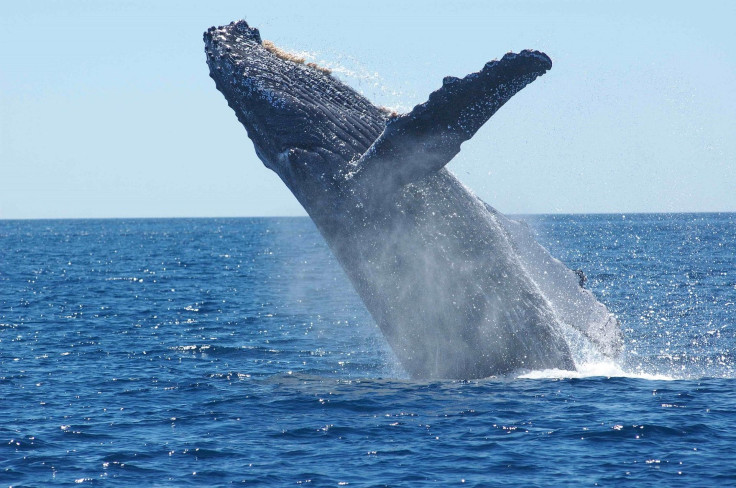Cameras On Humpback Whales Show Marine Mammal Behavior In Antarctica

What would it be like to hop on a humpback whale for a piggyback ride? Researchers got the next best thing when they attached cameras to the ocean mammals’ backs in Antarctica.
The cameras stick on with suction cups that don’t hurt the whales and stay for a day or two, National Geographic says. They track the creatures and capture “a whale's-eye view of a changing undersea universe, helping reshape our knowledge of whale life in the Southern Ocean.” And they do that without inserting humans into their underwater world.

The Southern Ocean is the water that covers the bottom of the world, the extreme south of Earth’s oceans. This whale research is taking place on the western side of the Antarctic Peninsula — the tentacle of the continent’s land that points toward the tip of South America.
Video footage (below) has taught the experts more about whales, including that they “feed in water far deeper than expected, and they may use their blow holes to create openings in the ice to breathe.” The cameras also offer views of social interactions, like play.
Read: 6 Extreme Places on Earth Where Life Thrives
Humpback whales are enormous, up to 60 feet long and between 50,000 and 80,000 pounds, so there’s a lot of feeding footage to be had. The National Oceanic and Atmospheric Administration says the gray and white mammals can eat up to 3,000 pounds of crustaceans, plankton and small fish every day. The whales can live about 50 years.
“It’s really beautiful when they are swimming under the sea ice,” scientist Ari Friedlaender, an ecologist with Oregon State University's Marine Mammal Institute, told National Geographic. “They’re so fluid and moving around in three dimensions and just cruising. But to be honest, we don’t know what everything we’re watching means yet.”
Humpback whales have been in the news lately for a more tragic reason: They have been washing up dead on the East Coast of the United States and experts are not sure why. More than two dozen mysteriously died last year and there have been 15 additional dead humpback whale cases since the beginning of this year, according to Popular Science. NOAA is investigating, using autopsies to find out what is going wrong. “So far, 10 of the 20 dead whales that have been necropsied clearly showed signs of being hit by boat propellers. That stands out because normally, NOAA only gets an average of 1.4 reports of boats hitting whales per year.”
In other cases of unusual marine animal deaths, toxic algae and infections have also been the culprit, though it is still unclear if those factored into the recent whale deaths.
See also:
© Copyright IBTimes 2024. All rights reserved.





















